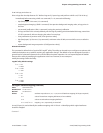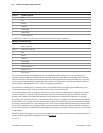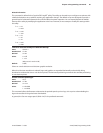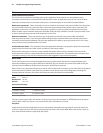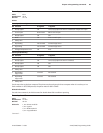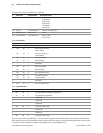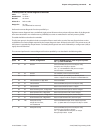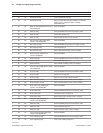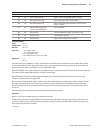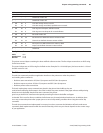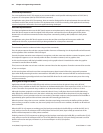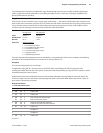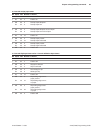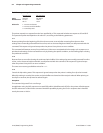
Chapter 5: Programming commands 87
A776-PG00001 C 12/09 A776 (B780) Programming Guide
Value of n
ASCII Hex Dec Remote diagnostic item Function
» AF 175 Cover openings tally Return cover openings tally, returns 10 bytes
B2 178 Max temperature tally Reset max temperature reached value
| B3 179 Max temperature tally Return max temperature reached since it was reset,
returns 10 bytes
B4 180 Slip lines tally, 8 digit ASCII Write to NVRAM
numeric, max 99,999,999
B5 181 Slip line tally Write to NVRAM, and print on receipt to verify
B6 182 Slip lines tally Clear slip lines tally to 0
B7 183 Slip lines tally Return slip line tally, returns 10 bytes
Transmit status
ASCII GS r n
Hexadecimal 1D 72 n
Decimal 29 114 n
Value of n: 1, 49 = printer status
2, 50 = cash drawer status
3, 51 = slip paper status
4, 52 = Flash memory user sector status
Range of n: 1–4
49–52
Transmits the status specied by n. This is a batch mode command which transmits the response after all prior data
in the receive buer has been processed. There may be a time lag between the printer receiving this command and
transmitting the response, depending on the receive buer status.
When DTR/DSR RS-232C communications handshaking control is selected, the printer transmits the one byte response
only when the host signal DSR indicates it is ready to receive data.
When XON/XOFF RS-232C communications handshaking control is selected, the printer transmits the one byte
response regardless of the host signal DSR.
When unsolicited status mode (USM) is enabled using the enable/disable unsolicited status mode command (1D 61),
the status transmitted by this command (transmit status) and the USM status must be dierentiated according to
the information found in recognizing data from the printer. This is found in the real time commands section of this
document.
The status bytes to be transmitted are described in the following four tables.
Exceptions
When n is out of the specied range, the command is ignored.
Unlike the A756, that had a dedicated connector and resultant dedicated status reporting for each cash drawer, the
A776 has a single connector that shares data reporting from either cash drawer. When either cash drawer is open, an
open status is reported by the printer.
Continued . . .



